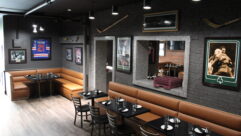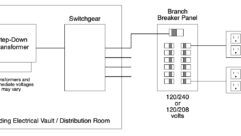How Is AV Like HVAC?
Offering standardized AV systems suited to a variety of applications can help integrators lower costs and improve service.
WHILE OWNERS, architects, and even some AV managers may not know much about what we do in the pro AV design and integration business, some AV design and integration professionals don’t fully understand the architectural building and design process either. We’re two industries that need to work together in a new way, and we’re slowly getting to know each other better after our shotgun wedding. But after all the design and installation is finished, there’s more new ground to cover relating to how owners view and deal with their new — and sometimes aging — AV systems.
Different from whom?
One issue pro AV professionals have stressed to architects and contractors is that we need to be considered shoulder-to-shoulder with the mechanical, electrical, and plumbing engineers and contractors on the building team. But we caution that we’re different because we’re not like other low-voltage industries such as fire protection, security, and data/telecom.
We care more about more aspects of the building than they do. The data/telecom consultant and the contractor, for example, are concerned about cable pathways and data/telecom rooms, but once the wire gets to the jack in the wall, they’re done. The user plugs in a Cat-something cable and their computers hum along nicely (most of the time).
In pro AV, we’re interested in how to get cables from place to place and have more kinds of cable, but once the cables get there, we keep going. Our equipment doesn’t just sit on a desktop. We have projectors and loudspeakers that need to be mounted in the ceiling, monitors that need to be mounted on the walls, screens that need to be installed, and microphones that need to be integrated into furniture. Then we need to make sure it can all be seen and heard, so we work on sightlines, room acoustics, room finishes, seating layouts, and lighting plans. We may even make the building taller if we need more structure-to-structure height for adequate sightlines and screen sizing.
The difference? Pro AV has more impact on the building design than any other low-voltage system, and often arguably more than electrical or mechanical systems in many cases.
What’s not so different?
During design and construction, we have some similarities with other trades. We need to be involved — and involved early, given our potential impact on the building. But what happens after that?
During the warranty period after a new AV system has been installed, the users are excited about their new system, but they may have to make a few adjustments to their organization to accommodate it —particularly on the technical side. And what happens after the system’s warranty period is up?
This is where the similarities begin. After the system is installed, the proud system owner shows it off, uses it, and makes great strides in productivity. But then after a few years go by, things start to break or the system begins to struggle with the never-ending progress of video and control technology. Users start to complain and the tech staff gets grumpy. At that point, everyone starts to wonder what happened to all the great technology they invested in.
The answer to this problem is the same thing that happens to the user’s electrical and heating, ventilating, and air conditioning (HVAC) systems: They age. In fact, facility managers are constantly planning how to improve their maintenance of these more traditional building systems. They perform life cycle analysis and expect and plan for failures and obsolescence. But they don’t apply this same process with their AV systems.
Is there a system ownership disorder?
You could call it System Ownership Disorder (SOD). Owners with SOD haven’t really taken ownership of their AV systems. It may not be possible to operate and maintain a new building with $2 million worth of AV systems with the same staff that has been operating and maintaining the $200,000 worth of systems the building had before.
Failing to recognize this fact is a common mistake. Although facility managers take great pride in their clean mechanical rooms, their maintenance plan, and their well-ventilated data rooms, they may not think much about the aging AV systems with projectors that will one day meet the same fate as an old hot water recirculating pump. It’ll just happen to the projector first. Missing this similarity between AV and some of the more mundane building systems is another mistake.
So is there a cure for this disorder? Luckily, there is. Becoming aware of the problem is a start, but system buyers also need to take ownership of their AV systems just as they do with their mechanical and electrical systems.
Buyers should create a master plan, perform an operations and maintenance analysis, and conduct a life cycle analysis. They need to plan on projectors failing, video bandwidth expanding, and Internet delivery of audio and video increasing. And they should plan on reprogramming the control systems to accommodate changing user preferences and future AV component replacements.
So maybe AV is a bit different here, too. Life cycles are shorter for a projector than for a hot water recirculating pump. And the impact on replacing a projector may have more of a domino effect on the system than replacing a pump would have on the HVAC system.
There are also lots of other components that will have different Life cycles within an AV system. Amplifiers will do just fine for a long time compared to how often a replacement projector may be needed, either because of its age or technology advancements. Identifying these issues may require a different approach and some outside expertise.
The solution
The other term associated with life cycle costs is Total Cost of Ownership (TCO). Looking at TCO means looking not just at the hardware and software that will age and eventually need to be upgraded, repaired, or replaced. It’s also about the people and the organization that use and operate the systems.
There’s a cost for employing the adequate staff and support systems to operate and maintain the AV systems just as there is with electrical and mechanical systems. And having those people or an outsourced service means knowing what type of staff you need and how they’re organized and managed. All of this will ultimately help realize a better ROI for the AV system owner.
Both the AV and building industry professions have learned a lot over the past couple of decades about integrating AV systems into buildings, but there’s still more progress to be made. Someday architects and building contractors will see AV as a normal part of the building and design process, and we’ve made good progress to that end.
But while building and AV professionals are learning to work together, building owners need to take charge of their AV systems. They need to learn to recognize the need to treat their AV systems differently from other systems when it comes to procurement, design, installation, and training, but also remember to treat them the same when it comes to maintenance and facilities planning. Maybe AV really isn’t as different as we thought after all.
Tim Cape is a contributing editor for Pro AV and the principal consultant for Atlanta-based technology consulting firm Technitect LLC. He’s an instructor for the ICIA Audiovisual Design School and an active member of the consultant’s councils for both ICIA and NSCA. Contact him at[email protected].










